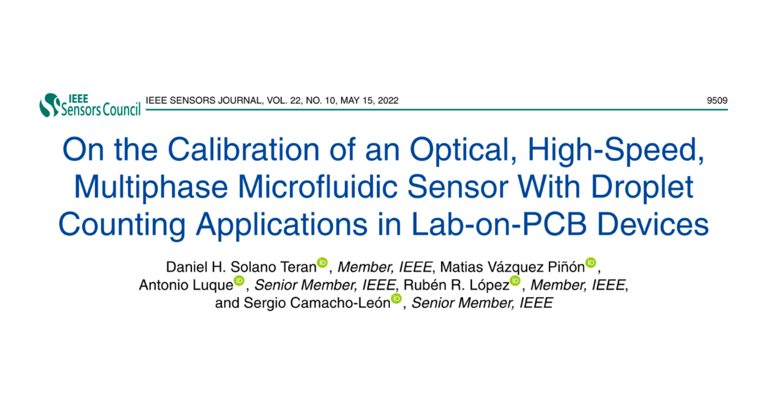On the Calibration of an Optical, High-Speed, Multiphase Microfluidic Sensor With Droplet Counting Applications in Lab-on-PCB Devices
The integration of microfluidics and droplet-based systems has led to platforms capable of characterizing multiple phases inside microchannels which can be an asset for many industries. Furthermore, recent developments on Lab-on-a-PCB devices focus to meet design specifications such as the ASSURED criteria (Affordable, Sensitive, Specific, User-friendly, Rapid and Robust, Equipment-free, and Deliverable to end-users). However, most of these systems still present external equipment dependencies, complex setup and manufacturing processes, low reproducibility, along reduced information regarding calibration processes for ASSURED-based sensors. In this work, we developed a rapid and fully integrated calibration process for optical droplet-based Lab-on-PCB devices by means of an interfacial distance constant called λ , to obtain reliable and wide spectrum droplet detection and characterization results. To test the proposed calibration process, a low-cost optical droplet sensor was built using commonly available electronics components, consisting only of a fluid channel between a Light-Emitting Diode (LED) and a Light Dependent Resistor (LDR), which voltage variation is measured and processed with an Arduino Uno. After the proposed λ calibration of the platform, we were able to characterize different multiphase flow properties such as velocity, flow rate, droplet lengths, and volume for velocities up to 1000 droplets per second with the Mean Relative Errors (MRE) ranging from 2.4% up to 17%. The lowest MRE value was obtained using a two-phase flow system for flow from 20μL /min up to 425μL /min. In contrast, the highest MRE value we report was found for a three-phase flow system for droplets at 250μL /min.
4/5/20221 min read


